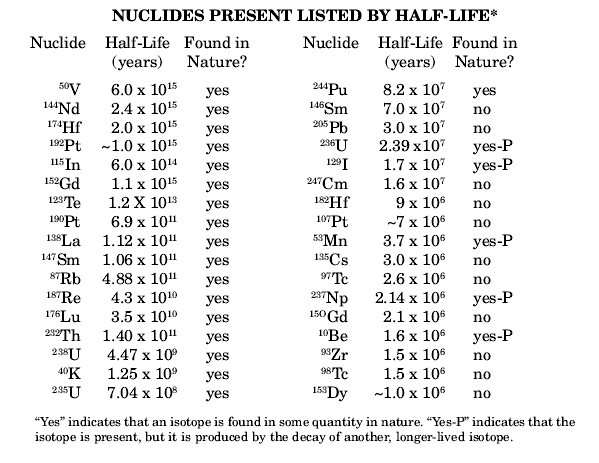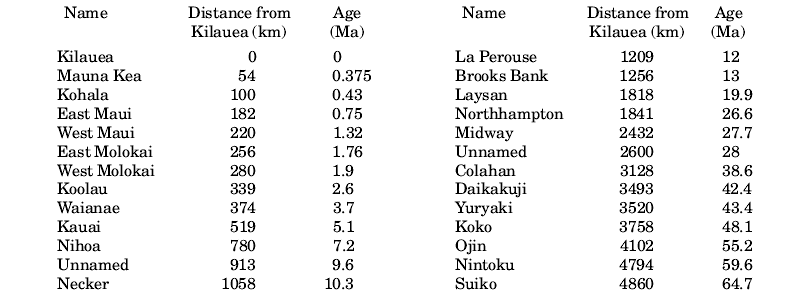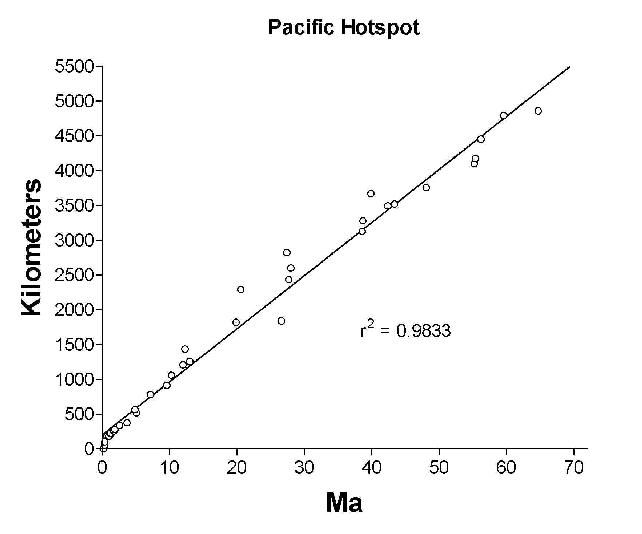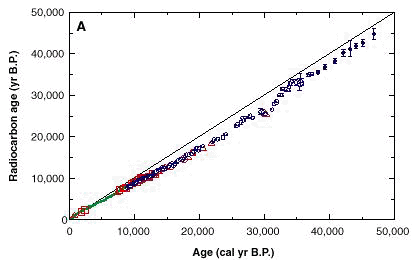Is Young-Earth Creationism a Heresy?
Is Young-Earth Creationism a Heresy?
James Moore
As a first reaction, young-Earth creationists will recoil at the suggestion that their tightly-held literal interpretation of the book of Genesis is a heresy. After all, who more strongly supports the Bible and all that is therein? But let us examine several lines of logic and see where they lead. First, we need to set a ground rule as to whether or not God is responsible for the Earth as we know it. The question is, "Did God make this world or didn't He?" If He didn't then He didn't and there's nothing to be done about it. Christians will undoubtedly answer that, yes, God did create the world.
Well and good, but that leads us to a new understanding. As we learn more and more about the Earth, are we not learning about how God created the Earth? The processes we find to have operated to cause the world around us are in actuality a reflection of God's hand.
Young Earth creationists believe that the Earth is no more than about 10,000 years old. There are, however, very many reasons for not believing that. We will discuss three here.
Radioactive Isotope Abundances: The first line of evidence refers to the abundance of radioactive isotopes on Earth. Radioactive isotopes decay at a constant rate. Half of every isotope will decay into a new isotope in a fixed period of time known as the half-life. After the passage of a certain number of half-lives, the isotope in question will have decayed to a point where it is no longer detectable. Let us set 20 half-lives as a limit beyond which the isotope in question is not detectable. The amount remaining then would be 1/220 or 1 part in 1,048,576, or only 0.000095% of the original.
This rate of decay may be very fast, as in the case of Magnesium 23. Half of it decays every 11.9 seconds, so in only 238 seconds or 3 minutes and 58 seconds, 20 half-lives have passed.
Let us examine Thorium 229, which has a half-life of 7,340 years. Creationists who believe that the Earth was created just 10,000 years ago would expect that there would be plenty of Thorium 229 on Earth since only a little over one half-life has passed. However, upon checking what isotopes are naturally present on Earth, we find Thorium 229 to be absent.
Investigating another isotope, Potassium 40, we find that it requires about 1.4 X 109 (one billion, 400 million) years for one-half of it to decay. If we again check to see what isotopes are naturally occurring on Earth, we do find Potassium 40 present.
We can learn much by examining which isotopes are naturally occurring. Geochemistry and common sense tells us that the very short-lived isotopes will not be found on Earth. There are very many isotopes, but most have half-lives in the order of seconds or minutes. Let us examine the isotopes with a half-life of one million years or longer and see where this leads us.
Table 1—Nuclides present listed by half-life1

1Dalrymple, 1991.
"Yes" indicates that an isotope is found in some quantity in nature. "Yes-P" indicates that the isotope is present, but it is produced by the decay of another, longer-lived isotope.
Ignoring the isotopes that are naturally produced and examining those that are left, we find something interesting between Plutonium 244, with a half-life of 82 million years, and Samarium 146, with a half-life of 70 million years. All the isotopes with a half-life as long or longer than Plutonium 244 are present and all those with a half-life shorter than that are absent - every one of them.
As Plutonium 244 is on the line of not being present in nature, here is an interesting bit of information about an analysis that found it.
There is a very good reason for this and it is the same reason that we do not expect to find either Magnesium 23 or Thorium 229 on Earth. A long enough period of time in the Earth's history has passed for them to have decayed away to nothing. Some may contend that the absent isotopes were never created in the first place. Did God create a group of isotopes based solely on their half-lives? Had the Earth been created just 10,000 years ago, we would expect to see many, many additional isotopes on Earth than we do. But they're not there. This leads us back to the point of this paper. God neither lies nor does He put false clues under our feet. The inescapable reason that there is this line between those isotopes that are present and those that are not is that the shorter-lived isotopes have had enough time (4.54 billion years) to decay away.
The Hawaiian Islands and Plate Tectonics: For our second line of evidence, let us journey to the Hawaiian Islands. As you know the volcano on the Big Island of Hawaii is active, very active. In just a dozen or so years it has added approximately 500 acres of land to the island (Tominaga, 2000). The Big Island of Hawaii is actually a composite of five volcanoes: Hualalai, Kohala, Mauna Kea, and the active Mauna Loa and Kilauea. These have built what is the tallest mountain on Earth when measured from the ocean floor. The volume of just Mauna Loa is a startling 10,000 cubic miles.
The Hawaiian Islands are older as you proceed west from the Big Island toward Niihau, the westernmost. Beyond that are several atolls extending to Midway, where the volcanic rocks have eroded below sea level, but a growth of coral on the volcano maintains it above sea level for now. The Theory of Plate Tectonics explains that the islands have formed one after another as the Pacific Plate moved slowly westward conveyor-belt fashion over the hotspot.
Not only were the islands formed in this fashion, but also a long line of subsurface seamounts extending all the way to the Kamchatka Peninsula in Russia. These form a straight line demonstrating their interrelatedness. See
Pacific Ocean-floor topography.The rocks on the islands, atolls and seamounts have been dated, and the distance of the islands/atolls/seamounts from Kilauea has been measured. The data are available at Hawai'i-Emperor Chain.
Table 2—Age and distance of islands/seamounts from Kilauea Caldera

Let's plot these data and see what they look like.
Comparison of ages of islands/seamounts to distance from Kilauea

Fig. 1. Comparison of ages of islands/seamounts to distance from Kilauea.
It's a straight line, isn't it. That means something.
Did you notice the r2 =.9833? That's the statistical confidence factor, which means that there is a greater than 98% chance that the data correlate. It means that the Pacific Plate is steadily moving westward across the hotspot at the blinding speed of 8 cm/year - or about three times as fast as your fingernails grow. If either radiometric dating or the Theory of Plate Tectonics were false, the graph would be a scatter of points with no correlation, and the maps of the islands/seamounts would not be arranged in a line. They're not false. The data fairly shout to us that this process, which we can see in action on the Big Island, has been taking place for at least 65 million years.It would be good if we could find the same process of plate movement in action somewhere else on Earth. Well, we can - in the Atlantic Ocean. In the late 1960s, the ship Glomar Challenger was used to drill a number of holes in the floor of the Atlantic Ocean from the Mid-Oceanic Ridge to the margins of the basin. The age of the samples recovered shows that the youngest rocks are on the ridge, where, in fact, they are being formed daily, and the oldest are on the margins. The ages there show that the ocean opened in Jurassic time (180 million years ago). Dividing the distance by the number of years, we again find that the plates are moving at about 5 cm per year. With the advent of Global Positioning System (GPS), the distance between points on both sides of the ocean can be very accurately determined. Measurements over several years show that the seafloor of the Atlantic is spreading at the same rate as determined from the seafloor samples, validating at once the Theory of Plate Tectonics and radiometric dating.
Varves and Carbon 14: The last line of evidence to be addressed concerns claims by young-Earth creationists that annually deposited sediments known as varves do not reflect an annual mode of deposition, and that radiometric dating using Carbon-14 is invalid. A paper by Kitagawa and van der Plicht (1998), provided a way to cross-check the two dating methods by comparing dates determined by both methods. It concerned Lake Suigetsu in Japan, which deposits dark-colored clay year-round and white layers resulting from the growth of diatoms in the spring. The authors took cores of the soft lake bed sediments and carefully counted the 1 mm-thick layers. 250 samples of the organic-rich material in the cores were dated using carbon-14. The graph was merged with data from tree-ring dates correlated with carbon-14 age determinations extending from the present back to 11,000 years. As can be plainly seen in the graph -
Fig. 2. Comparison of ages determined by counting varves to ages determined by carbon-14.

The results show clearly that there is practically a one to one correlation between the dates determined by counting the varves and the ages determined using carbon-14, thereby validating both methods.
It is interesting to note at this point that a paper was printed in the Creation Research Society Quarterly, the creationist's own journal (Aardsma, 1993) that showed that tree rings only grew one ring a year refuting the creationist's own apologetic that the trees must have grown multiple rings per year to match their perception of the Earth's age. Aardsma concluded that "it seems that the Flood must have occurred more than 10,000 years ago". For this honest disclosure, Aardsma left his position at the Institute for Creation Research under a cloud.
Conclusion: When confronted with three solid reasons why the Earth is old, young-Earth creationists will say "That's just how God made it", but therein lies a problem - a very big problem. If the Earth was, indeed, made in a single, supernatural act 10,000 years ago, then God, for some reason, left behind as part of the record of His creation these isotopic abundances, measurable rates of the movement of the Pacific and Atlantic Plates, and two valid methods of age determination, all of which show beyond any doubt that it was not created in a supernatural act some 10,000 years ago.
Ask yourself, "Why would God leave evidence that speaks against the actual record?" We may say that God can do things in anyway that He desires. God chose to be self-limiting. He is the God of order and laws such as gravity. God is good, just and truthful. This allows humans to trust a world that makes sense.
The final determination that must be made is that the record of nature, being God's record, is trustworthy as God has chosen not to lie to us. To say that He would lie would impart a most profound deviousness to God, which would be heresy. Therefore the only possible conclusion we can reach is that the Earth is old - very old.
All the "appearance of age" arguments made by young-Earth creationists to try to explain away the evidences of an old Earth are equally heretical. God did not put false clues under our feet to trick us. He gave us clues to show us His true creation and the way He did it. If God took 4.5 billion years to create the Earth, then so be it. It is far more in line with a firm faith to believe in a God-created old Earth than to believe that a devious god is trying to trick us into not believing in a supernatural creation.
A creationist in a pretrial deposition before the McLean vs. Arkansas trial in 1981 questioning the legality of Arkansas Act 590, exposed their own heretical views of the Creator with the following statement from pages 186-87 of the trial transcript:
As used in the context of creation-science as defined by Section 4 of Act 590, the terms or concepts of "creation" and "creator" are not inherently religious terms or concepts. In this sense, the term "creator" means only some entity with power, intelligence and a sense of design. Creation science does not require a creator who has a personality, who has the attributes of love, compassion, justice and so on which are ordinarily attributed to a deity. Indeed, the creation-science model does not require that the creator still be in existence.
One can scarcely imagine a more dispassionate faith statement by people who claim to be Christians. The Creator God the young-Earth creationists present would be a capricious, disposable, uncaring, unloving and probably dead god.
To conclude, we have examined the young-Earth creationist views of the age of the Earth and read their own view of the Creator. In both cases the paradigm of "Young-Earth Creationism" has been found to be based on a most outrageous heretical theology and must be rejected by persons of faith.
REFERENCES
Aardsma, G. E., 1993, Tree-ring dating and multiple ring growth per year: Creation Research Society Quarterly, v. 29, p. 184-189.
Dalrymple, G. B., 1991, The Age of the Earth (Stanford, CA: Stanford University Press, p. 377.
Kitagawa, H. and van der Plicht, J., 1998, Atmospheric radiocarbon calibration to 45,000 yr B.P.: Late glacial fluctuations and cosmogenic isotope production, Science, v. 289, p. 1187-1190.
Tominaga, L., 2000, The Unofficial Guide to Hawaii, 1st Edition, IDG Books Worldwide, Inc., p. 39.